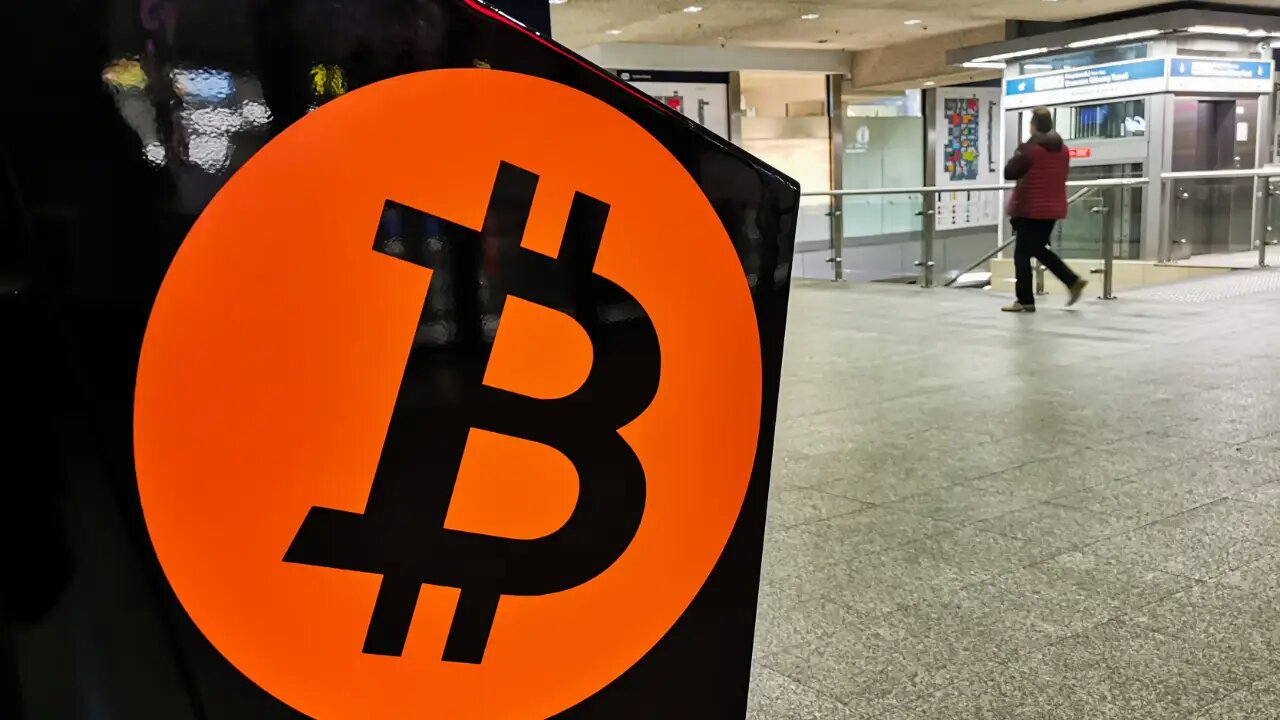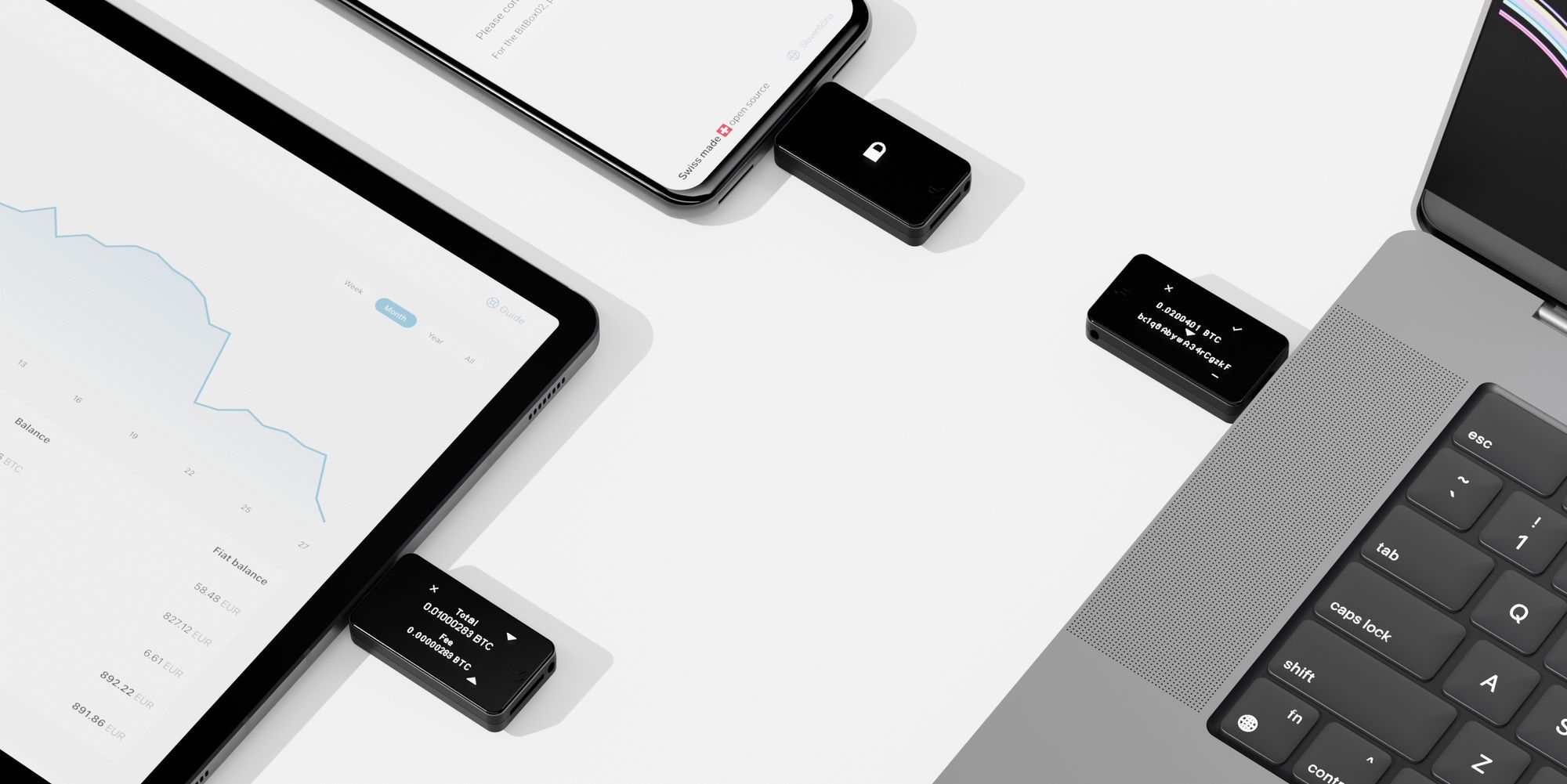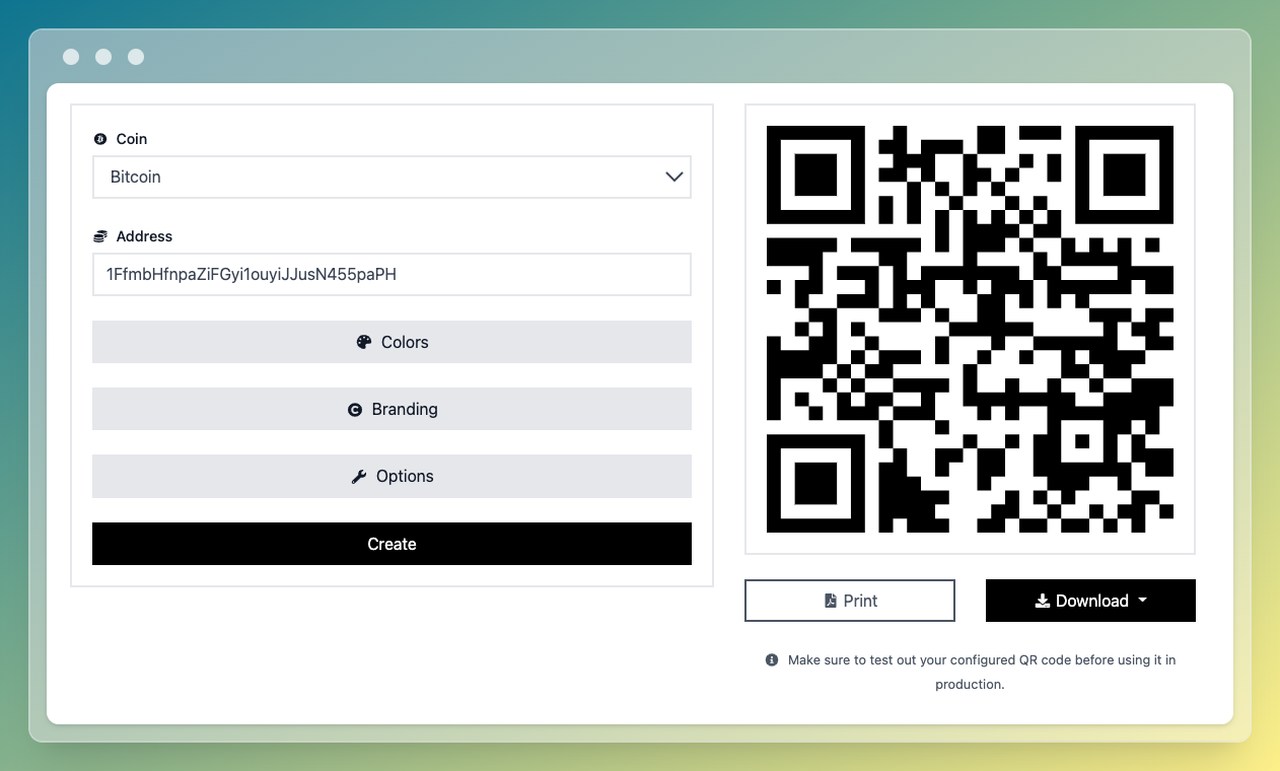Introduction
The world of cryptocurrency has revolutionized the way we transact and store value. With its decentralized nature and encryption techniques, cryptocurrencies offer secure and efficient means of transferring funds across borders. However, one common question that arises among crypto enthusiasts is, “how long does a crypto transfer take?”
The time it takes for a cryptocurrency transfer to complete depends on various factors, including network congestion, block confirmation time, transaction size, and fee amount. Understanding these factors can help paint a clearer picture of how long you can expect your crypto transfers to take.
In this article, we will explore the different factors that impact crypto transfer time and provide insights into the specific transfer times of popular cryptocurrencies like Bitcoin, Ethereum, Ripple, and Litecoin. We will also share some tips on how to expedite your crypto transfers for a smoother experience.
So, whether you’re new to the world of cryptocurrencies or an experienced investor, read on to discover the factors that affect crypto transfer time and how you can optimize your transfers.
Factors Impacting Crypto Transfer Time
Several factors come into play when determining how long a cryptocurrency transfer will take. Understanding these factors can help you manage your expectations and plan your transactions accordingly. Let’s take a closer look at each one:
Block Confirmation Time: Cryptocurrency transactions are recorded in blocks on the blockchain. Each block has to be confirmed by miners before the transaction is considered valid. The time it takes for a block to be confirmed varies depending on the cryptocurrency. Bitcoin, for example, has an average block confirmation time of around 10 minutes, while Ethereum has a faster average block time of around 15 seconds.
Network Congestion: During times of high demand or heavy network traffic, the blockchain network can become congested, leading to delays in the confirmation of transactions. Network congestion is more common for popular cryptocurrencies like Bitcoin, where numerous transactions are processed simultaneously. When the network is congested, you may experience longer transfer times.
Transaction Size: The size of the transaction, measured in kilobytes (KB), can influence the transfer time. Larger transactions require more data to be processed and verified, resulting in longer confirmation times. This is especially true for transactions that involve several inputs or outputs.
Fee Amount: Miners prioritize transactions with higher transaction fees. When there is a high volume of transactions on the network, setting a higher transaction fee can incentivize miners to process your transaction faster. However, keep in mind that setting a very low fee may result in your transaction being delayed or even stuck in the network.
By considering these factors, you can gauge the approximate time it will take for your cryptocurrency transfer to complete. However, it’s important to note that each cryptocurrency operates on its unique blockchain with its own set of rules and characteristics.
In the following sections, we will explore the average transfer times for popular cryptocurrencies like Bitcoin, Ethereum, Ripple, and Litecoin, providing you with a more detailed understanding of the timeframes you can expect when transferring these coins.
Block Confirmation Time
Block confirmation time is a crucial factor that impacts the speed of cryptocurrency transfers. Each cryptocurrency has its own average block confirmation time, which refers to the time it takes for a new block to be added to the blockchain, containing the recorded transactions.
Bitcoin, the first and most renowned cryptocurrency, has an average block confirmation time of around 10 minutes. This means that it takes approximately 10 minutes for a new block to be added to the Bitcoin blockchain, verifying and confirming the transactions within it. This relatively longer block confirmation time in Bitcoin is due to the decentralized nature of the network and the complex mathematical calculations performed by miners to validate transactions.
On the other hand, Ethereum, another popular blockchain platform, has a faster average block confirmation time of around 15 seconds. This shorter confirmation time is due to Ethereum’s different consensus mechanism, known as Proof of Stake. Ethereum’s network relies on validators instead of miners, allowing for faster block confirmations.
Ripple, a cryptocurrency specifically designed for fast cross-border transactions, boasts an average block confirmation time of just a few seconds. This rapid confirmation time is achieved through Ripple’s unique consensus algorithm, which does not require independent validators. Instead, Ripple relies on a network of trusted nodes to validate and confirm transactions quickly.
Likewise, Litecoin, often referred to as the “lite” version of Bitcoin, has a relatively shorter average block confirmation time of around 2.5 minutes. This faster confirmation time is a result of implementing a different hashing algorithm called Scrypt, which requires less computational power compared to Bitcoin’s SHA-256 algorithm.
It’s important to note that while these average block confirmation times provide a general idea of the speed of each cryptocurrency, the actual time it takes for a specific transaction to be confirmed can vary. Factors such as network congestion, transaction size, and transaction fee can influence the confirmation time, even within the given average.
In the next sections, we will dive deeper into the transfer times of specific cryptocurrencies, providing you with a more comprehensive understanding of the timeframes you can expect when conducting crypto transfers.
Network Congestion
Network congestion is a significant factor that can affect the speed of cryptocurrency transfers. As cryptocurrencies gain popularity and more people participate in transactions, the blockchain network can become congested, leading to delays in confirming transactions.
During times of high demand or heavy network traffic, the number of pending transactions can increase significantly. This puts a strain on the network’s capacity to process and verify transactions efficiently. Consequently, the confirmation time for transactions may lengthen, resulting in delayed transfers.
Bitcoin, being the most widely used cryptocurrency, is particularly susceptible to network congestion. With its average block confirmation time of 10 minutes, a surge in transaction volume can lead to an accumulation of unconfirmed transactions waiting to be processed. This is especially evident during times of high market activity or when there is increased interest in Bitcoin.
Ethereum, with its faster average block confirmation time of 15 seconds, is generally more resilient to network congestion. However, during periods of heavy usage, such as when popular applications are running on the Ethereum blockchain or during token sales, the network can experience congestion, leading to longer confirmation times.
To mitigate the impact of network congestion on your cryptocurrency transfers, it is advisable to monitor the network conditions before initiating a transaction. Cryptocurrency wallets and exchange platforms often provide real-time information on network status, including transaction backlogs and confirmation times. This allows you to choose an optimal time to carry out your transfer when the network is less congested.
Additionally, setting an appropriate transaction fee can also influence the speed of your transaction during network congestion. Miners prioritize transactions with higher fees, as they are incentivized to include those transactions in the blocks they mine. By setting a higher fee, you increase the chances of your transaction being processed swiftly, even in times of congestion.
Overall, network congestion can impact the speed of cryptocurrency transfers, especially during peak usage periods. Keeping an eye on network conditions and adjusting transaction fees accordingly can help ensure a smoother and faster transfer experience.
Transaction Size
The size of a cryptocurrency transaction plays a role in determining transfer time. Transaction size is measured in kilobytes (KB) and refers to the amount of data required to process and verify the transaction on the blockchain.
When a transaction is initiated, it includes information such as the sender’s address, the recipient’s address, the amount being transferred, and other transaction details. Additionally, inputs and outputs can affect the transaction size. Inputs are the funds used as the source of the transaction, while outputs are the addresses where the funds are being sent. Transactions involving multiple inputs or outputs will require additional data to record these details.
A larger transaction size typically requires more computational power and time to process, resulting in longer confirmation times. This is because miners need to perform more validation checks and incorporate the transaction into a block. Conversely, smaller transaction sizes are generally processed more quickly.
For example, let’s consider Bitcoin. Since Bitcoin blocks have a predetermined maximum size, when there is high transaction volume, large transactions may compete for limited block space. As a result, smaller transactions may be prioritized due to their smaller size, leading to faster confirmation times.
It’s important to note that transaction size is not directly related to the amount being transferred. Even a small transfer of a few dollars can have a larger transaction size if the inputs or outputs are numerous.
One way to optimize transaction size is through the use of batching. Batching involves combining multiple transactions into a single one, which reduces the total transaction size. This method is commonly used by exchanges and businesses that process a large number of transactions. By batching transactions, they can save on transaction fees and speed up the overall transfer process.
Therefore, when considering cryptocurrency transfers, keep in mind that the size of the transaction can impact how long it takes to be processed and confirmed. Smaller transactions generally have a better chance of being confirmed faster, while larger transactions may require additional time due to the increased data processing requirements.
Fee Amount
The fee amount associated with a cryptocurrency transaction is another important factor that can influence its transfer time. Transaction fees are paid to miners as an incentive to prioritize and include transactions in the blocks they mine.
Miners typically prioritize transactions with higher fees because they offer a greater financial reward. When the network is congested or there are more transactions waiting to be processed than the available block space, miners have the flexibility to choose which transactions to include based on the fees associated with them.
Setting a higher transaction fee increases the likelihood of your transaction being processed more quickly, as miners have a greater incentive to prioritize it. Conversely, if you set a lower fee, your transaction may have a lower priority and might experience longer confirmation times, especially during periods of network congestion.
Some cryptocurrency wallets and exchanges provide recommended fee levels or allow you to manually set the fee amount. These recommendations are often based on the current network conditions and can help you estimate the appropriate fee for your transaction. However, it’s important to note that the fee market can be dynamic, and fees may vary based on the level of network activity at any given time.
It’s essential to find the right balance when setting transaction fees. Setting a fee that is too low may result in your transaction being delayed or even remaining unconfirmed for an extended period. On the other hand, setting an exorbitant fee is unnecessary and may lead to unnecessary expenses.
Consider factors such as the urgency of your transaction, the current network conditions, and the transaction value when determining the appropriate fee. By staying up-to-date with the fee market and strategically setting transaction fees, you can optimize the speed and efficiency of your cryptocurrency transfers.
It’s worth noting that some cryptocurrencies, such as Bitcoin, have implemented fee estimation algorithms that dynamically adjust the recommended fee based on the network conditions. This can simplify the fee-setting process and ensure more accurate fee levels for timely transaction processing.
Ultimately, transaction fees are a vital aspect to consider when aiming for expedited cryptocurrency transfers. Choosing an appropriate fee ensures that your transaction receives the necessary attention from miners, helping to reduce transfer times and ensure the successful completion of your crypto transactions.
Coin-Specific Transfer Times
Each cryptocurrency operates on its unique blockchain network, resulting in varying transfer times depending on the coin in question. Let’s explore the transfer times of some popular cryptocurrencies:
Bitcoin Transfer Time: Bitcoin, known as the pioneer of cryptocurrencies, has an average block confirmation time of around 10 minutes. This means that it takes approximately 10 minutes for a new block to be added to the Bitcoin blockchain, verifying and confirming the transactions within. However, it’s important to note that Bitcoin transactions may require multiple confirmations for increased security, which can further extend the overall transfer time.
Ethereum Transfer Time: Ethereum, with its faster average block confirmation time of around 15 seconds, offers quicker transfer times compared to Bitcoin. The relatively shorter block time allows for faster processing and confirmation of transactions. However, similar to Bitcoin, Ethereum transactions may also require multiple confirmations for added security.
Ripple Transfer Time: Ripple stands out with its exceptionally fast transfer times. It boasts an average block confirmation time of just a few seconds. Ripple’s consensus algorithm, known as the XRP Ledger, does not rely on traditional mining but instead uses a network of trusted validators. This enables Ripple to achieve near-instantaneous transaction confirmations, making it well-suited for quick cross-border financial transactions.
Litecoin Transfer Time: Litecoin, often referred to as the “lite” version of Bitcoin, offers faster transfer times than its predecessor. It has an average block confirmation time of around 2.5 minutes. Litecoin utilizes a different hashing algorithm called Scrypt, which requires less computational power compared to Bitcoin’s SHA-256 algorithm. This allows for faster block generation and quicker transaction confirmations.
Other popular cryptocurrencies, such as Bitcoin Cash, Cardano, and Binance Coin, have their own distinctive blockchain networks and average transfer times. It’s important to research and understand the specific transfer times associated with the cryptocurrencies you are transacting with to manage your expectations.
Moreover, it’s crucial to note that the aforementioned transfer times are average values and can vary depending on network congestion, transaction size, and fee amounts, as discussed in earlier sections. Thus, it’s always recommended to stay updated with the current network conditions and make appropriate adjustments to ensure smoother and expedited transfers.
By having an understanding of the coin-specific transfer times and the factors that influence them, you can make informed decisions when it comes to choosing the right cryptocurrency for your specific transfer needs.
Bitcoin Transfer Time
Bitcoin, the first and most well-known cryptocurrency, operates on its blockchain network and has a specific transfer time associated with it. Understanding the transfer time for Bitcoin transactions is essential for managing expectations and planning your cryptocurrency transfers.
The average block confirmation time for Bitcoin is around 10 minutes. This means that it takes approximately 10 minutes for a new block to be added to the Bitcoin blockchain, validating and confirming the transactions within it. However, it’s important to note that the actual transfer time for a Bitcoin transaction can vary.
One factor that can influence Bitcoin transfer time is network congestion. Bitcoin’s popularity and high transaction volume can lead to congestion on the network. During peak times, there may be a backlog of unconfirmed transactions waiting to be included in blocks. In such cases, the confirmation time for Bitcoin transactions can be longer than the average block time of 10 minutes.
Additionally, the size of a Bitcoin transaction can also impact its transfer time. Larger transactions, which require more data to process and verify, may take longer to be included in blocks. This is because miners prioritize smaller-sized transactions due to the limited block space available.
Transaction fees associated with Bitcoin transfers can also influence the speed of transaction confirmation. Miners typically prioritize transactions with higher fees, as they offer a greater financial incentive. By setting a higher transaction fee, you increase the likelihood of your Bitcoin transaction being processed and confirmed more quickly.
It’s important to consider these factors and understand that the transfer time for Bitcoin transactions can be subject to variability. While the average block confirmation time is around 10 minutes, network congestion, transaction size, and fee amounts can impact the actual transfer time.
To navigate potential delays, it is advisable to monitor the network conditions before initiating a Bitcoin transfer. You can refer to real-time information provided by cryptocurrency wallets and exchange platforms to gauge the current state of the Bitcoin network, including transaction backlogs and fee recommendations.
By being mindful of network conditions and selecting an appropriate transaction fee, you can optimize the speed and efficiency of your Bitcoin transfers. It’s important to plan accordingly and allow for potential variations in transfer time to ensure successful and timely transactions.
Ethereum Transfer Time
Ethereum, a popular blockchain platform for decentralized applications and smart contracts, has a different transfer time compared to Bitcoin. Understanding the transfer time of Ethereum transactions can help you plan and manage your cryptocurrency transfers more effectively.
The average block confirmation time for Ethereum is around 15 seconds. This means that it takes approximately 15 seconds for a new block to be added to the Ethereum blockchain, validating and confirming the transactions within it. Compared to Bitcoin’s 10-minute block confirmation time, Ethereum offers a significantly faster transfer time.
This faster transfer time is attributed to Ethereum’s different consensus mechanism, known as Proof of Stake (PoS). Unlike Bitcoin’s Proof of Work (PoW), Ethereum validators, also known as “stakers,” are selected based on the number of Ethereum coins they hold and are willing to “stake” as collateral. This consensus mechanism enables quicker block formation and transaction confirmations.
However, it’s important to note that the transfer time of Ethereum transactions can still be subject to variability. Network congestion, transaction size, and fee amounts can impact the overall transfer time, even with the faster block confirmation time of Ethereum.
Similar to Bitcoin, network congestion can occur during times of high demand or heavy network traffic, leading to delays in confirming Ethereum transactions. It is advisable to monitor the network conditions and transaction backlogs before initiating a transfer to gauge the likelihood of potential delays.
Transaction size is another factor that can influence Ethereum transfer time. Larger transactions, which require more computational resources to process and verify, may take longer to be included in blocks. Similarly, higher transaction fees can incentivize miners to prioritize the inclusion of transactions in blocks, potentially reducing the transfer time.
By taking into account these factors and staying informed about the current state of the Ethereum network, you can optimize the speed and efficiency of your Ethereum transfers. It’s important to plan accordingly and be aware that while Ethereum offers faster transfer times compared to Bitcoin, there are still factors that can impact the actual transfer time.
With its ability to support smart contracts and decentralized applications, Ethereum has gained significant popularity in the cryptocurrency space. Understanding its transfer time dynamics can help you make informed decisions when transacting with Ethereum and ensure timely and successful transfers.
Ripple Transfer Time
Ripple is a unique cryptocurrency that aims to facilitate fast and low-cost cross-border transactions. Unlike other cryptocurrencies, Ripple boasts an exceptionally fast transfer time, making it a preferred choice for individuals and institutions looking for quick and efficient transfers.
On the Ripple network, the average block confirmation time is just a few seconds, allowing for near-instantaneous transfer times. This rapid transfer time is made possible by Ripple’s consensus algorithm, known as the XRP Ledger. Instead of relying on traditional mining, it utilizes a network of trusted nodes to validate and confirm transactions quickly.
Ripple’s consensus algorithm eliminates the need for extensive computational calculations, resulting in a significantly faster transfer time compared to cryptocurrencies like Bitcoin and Ethereum. When you initiate a transaction on the Ripple network, it undergoes the consensus process swiftly and gets confirmed in a matter of seconds.
The near-instantaneous transfer time offered by Ripple positions it as a viable solution for international remittances and cross-border payments. Financial institutions and banks can leverage Ripple’s technology to expedite transactions, minimize fees, and improve overall transaction efficiency.
It’s worth noting that along with the fast transfer time, Ripple offers additional benefits such as low transaction fees and high scalability. Unlike some other cryptocurrencies, Ripple can handle a high volume of transactions without experiencing significant network congestion or increased transfer times. This scalability makes it a reliable option for enterprise-level use cases.
While Ripple provides unparalleled transfer speed and efficiency, it’s important to consider that Ripple’s main focus is on facilitating transactions between different fiat currencies rather than being used as a store of value like Bitcoin or Ethereum. Therefore, if your intention is to hold Ripple for investment purposes, it’s crucial to consider other factors such as market dynamics and long-term growth potential.
In summary, Ripple offers an incredibly fast transfer time, making it an attractive choice for individuals and entities seeking rapid cross-border transactions. The near-instantaneous confirmation provided by the XRP Ledger indicates Ripple’s ability to streamline the movement of funds efficiently, benefiting users in need of speedy and cost-effective transactions.
Litecoin Transfer Time
Litecoin, often referred to as the “lite” version of Bitcoin, offers faster transfer times compared to its predecessor. Understanding the transfer time of Litecoin transactions can provide you with insights into its efficiency and suitability for your cryptocurrency transfers.
The average block confirmation time for Litecoin is around 2.5 minutes. This is considerably shorter compared to Bitcoin’s 10-minute block confirmation time. The faster block confirmation time of Litecoin is primarily due to its implementation of a different hashing algorithm called Scrypt.
Scrypt requires less computational power compared to Bitcoin’s SHA-256 algorithm, enabling faster block generation and quicker transaction confirmations. As a result, Litecoin transactions are often processed more rapidly, reducing the overall transfer time.
With its shorter transfer time, Litecoin offers a viable alternative for individuals who value quicker transaction confirmations. Whether you are sending Litecoin for payments or transferring between exchanges, the relatively fast transfer time enhances the efficiency and user experience.
It’s important to note that while Litecoin may provide faster transfer times compared to Bitcoin, other factors such as network congestion, transaction fee amounts, and transaction size can still influence the actual transfer time. Monitoring the network conditions and adjusting transaction fees accordingly can help optimize the speed and efficiency of Litecoin transfers.
Litecoin’s faster confirmation time also contributes to its usability as a medium of exchange. Quick confirmations allow merchants to accept Litecoin as a payment method with reduced waiting time, enhancing the overall transaction convenience.
Additionally, Litecoin’s scalability has improved over the years, allowing it to handle a larger number of transactions and reducing the likelihood of network congestion. This enhances the speed and efficiency of Litecoin transfers, making it a reliable option for various use cases.
Litecoin’s shorter transfer time has positioned it as a popular option not only for individuals seeking fast transactions but also for those looking for a reliable cryptocurrency with established credibility. While Litecoin shares many similarities with Bitcoin, its faster transfer times and improved scalability make it an attractive choice for users who prioritize efficiency in their cryptocurrency transactions.
Overall, Litecoin’s average block confirmation time of around 2.5 minutes offers quicker transfer times compared to Bitcoin, making it an appealing option for users looking for fast transaction confirmations and enhanced usability as a medium of exchange.
Other Popular Cryptocurrencies
While Bitcoin, Ethereum, Ripple, and Litecoin are well-known cryptocurrencies, there are several other popular coins that have gained traction and offer unique features and transfer times. Let’s explore some of them:
Bitcoin Cash (BCH): Bitcoin Cash is a fork of Bitcoin that aims to enhance scalability and allow for faster transactions. It has an average block confirmation time of around 10 minutes, similar to Bitcoin. The larger block size of Bitcoin Cash allows for more transactions to be processed per block, resulting in potential faster confirmation times during periods of network congestion.
Cardano (ADA): Cardano is a blockchain platform that aims to provide a secure and scalable infrastructure for the development of decentralized applications and smart contracts. It achieves this through a layered architecture and a consensus algorithm called Ouroboros. The average block confirmation time for Cardano is around 20 seconds, offering relatively fast transfer times.
Binance Coin (BNB): Binance Coin is the native cryptocurrency of the Binance exchange. It serves as an utility token for various purposes within the Binance ecosystem. Binance Coin operates on the Binance Chain, which has a block confirmation time of approximately 3 seconds, enabling near-instant transfers within the Binance network.
Stellar (XLM): Stellar is a blockchain platform that focuses on facilitating fast cross-border transactions and promoting low-cost remittances. Stellar’s average block confirmation time is around 5 seconds, allowing for quick transfer times. Stellar’s consensus mechanism, known as the Stellar Consensus Protocol, offers high throughput and scalability.
NEO (NEO): NEO, often referred to as the “Chinese Ethereum,” is a blockchain platform that enables the development of decentralized applications and smart contracts. NEO’s average block confirmation time is around 15 seconds, similar to Ethereum. It uses a consensus algorithm called Delegated Byzantine Fault Tolerance (dBFT) to achieve fast and final transaction confirmations.
It’s important to note that transfer times can vary within these cryptocurrencies, depending on factors such as network congestion, transaction size, and fee amounts. Additionally, while these cryptocurrencies have gained popularity and offer attractive features, it’s crucial to conduct thorough research and consider your specific needs before engaging in transactions.
The cryptocurrency landscape is dynamic, and new coins and technologies continue to emerge. Understanding the transfer times and features of various cryptocurrencies will help you make informed decisions when selecting the most suitable option for your specific use case.
Tips to Expedite Crypto Transfers
When it comes to cryptocurrency transfers, there are several strategies you can employ to expedite the process and ensure faster transaction confirmations. Consider the following tips to optimize your crypto transfers:
1. Check Network Conditions: Before initiating a transfer, monitor the network conditions of the specific cryptocurrency you’re working with. Keep an eye on factors such as network congestion and transaction backlogs. By selecting a period with lower network activity, you increase the chances of faster confirmations.
2. Set an Appropriate Transaction Fee: Transaction fees play a crucial role in determining the priority of your transaction. Setting a higher transaction fee incentivizes miners to prioritize your transaction, potentially reducing confirmation times. Refer to recommended fee levels provided by wallets or exchanges, or consider using fee estimation algorithms if available.
3. Optimize Transaction Size: Reduce the size of your transaction by combining multiple smaller transactions into a single transaction. This process, known as batching, reduces the data size and can result in faster confirmations. Batching is particularly useful for frequent traders and businesses that process numerous transactions regularly.
4. Ensure Accurate Transaction Details: Double-check and ensure the accuracy of the recipient’s address and the amount you’re transferring. Any errors in the transaction details can lead to delays or even loss of funds. Take your time to verify the information before submitting the transaction.
5. Choose the Right Time for Your Transfer: Timing is crucial when it comes to crypto transfers. Avoid periods of peak activity or high market volatility, as they can lead to increased network congestion and longer transfer times. Selecting a period with lower demand can help expedite your transaction.
6. Consider Layer 2 Solutions: Explore the use of layer 2 solutions like Lightning Network or sidechains, depending on the specific cryptocurrency you’re working with. These solutions are designed to improve scalability and reduce congestion, enabling faster and cheaper transactions. However, be aware of any associated risks or limitations.
7. Stay Informed and Adapt: Stay updated with the latest developments and advancements in the cryptocurrency space. New technologies and upgrades, such as protocol improvements or optimizations, may enhance transaction speeds. Flexibility and adaptability will allow you to take advantage of these innovations as they arise.
By implementing these tips, you can optimize your cryptocurrency transfers and potentially expedite the confirmation process. However, it’s important to note that transfer times can still vary based on factors beyond your control, such as network conditions and transaction volume.
Remember to conduct thorough research and understand the specific dynamics of each cryptocurrency network you’re dealing with. This knowledge will empower you to make informed decisions and maximize the efficiency of your crypto transfers.
Conclusion
Cryptocurrency transfer times are influenced by various factors such as block confirmation time, network congestion, transaction size, and fee amount. Understanding these factors is crucial for managing expectations and optimizing the speed and efficiency of your cryptocurrency transfers.
Bitcoin, with its average block confirmation time of around 10 minutes, offers a solid foundation for secure and decentralized transactions. Ethereum provides faster transfer times, with an average block confirmation time of around 15 seconds, making it suitable for various decentralized applications and smart contracts.
Ripple stands out with near-instantaneous transfer times, thanks to its consensus algorithm and unique network design. Litecoin, often considered the “lite” version of Bitcoin, offers faster transfer times due to its different hashing algorithm.
Other popular cryptocurrencies, including Bitcoin Cash, Cardano, Binance Coin, Stellar, and NEO, have their own specific transfer times that cater to different use cases and requirements.
To expedite your cryptocurrency transfers, consider monitoring network conditions, setting appropriate transaction fees, optimizing transaction size, selecting an optimal timing, and exploring layer 2 solutions or advancements in the cryptocurrency space.
By staying informed, conducting thorough research, and adapting to the evolving landscape, you can maximize the speed and efficiency of your crypto transfers, ensuring timely and successful transactions.
Keep in mind that transfer times can still vary based on factors such as network congestion, transaction volume, and other dynamic circumstances. Therefore, it is crucial to plan ahead, consider the specific requirements of your transactions, and make informed decisions accordingly.
With the rapid growth and adoption of cryptocurrencies, it’s important to stay up-to-date with the latest trends and advancements. By being aware of the factors influencing transfer times and implementing the appropriate strategies, you can navigate the cryptocurrency landscape more effectively and make the most of your crypto transfers.

























